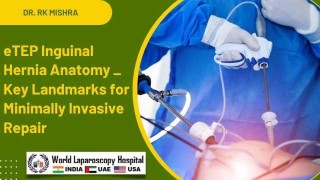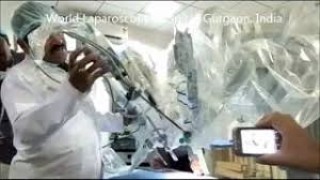Robotic Ovarian Cystectomy
Add to
Share
210 views
Report
1 month ago
Description
Robotic Ovarian Cystectomy is a minimally invasive surgical procedure designed to remove ovarian cysts while preserving healthy ovarian tissue. Utilizing advanced robotic technology, this procedure allows surgeons to operate with exceptional precision, control, and visualization. It is an evolution of conventional laparoscopic surgery, offering enhanced outcomes for patients. What is an Ovarian Cyst? Ovarian cysts are fluid-filled sacs that develop on or within the ovary. While many cysts are harmless and resolve on their own, some may cause pain, hormonal imbalance, or complications such as ovarian torsion or rupture. In such cases, surgical removal is recommended. Advantages of Robotic Ovarian Cystectomy Robotic-assisted surgery provides several benefits compared to traditional open or laparoscopic procedures: Enhanced Precision: Robotic arms with articulated instruments allow meticulous dissection, preserving healthy ovarian tissue. Superior Visualization: 3D high-definition cameras provide a magnified view of the pelvic anatomy, improving safety during delicate procedures. Minimally Invasive: Small incisions lead to less pain, minimal scarring, and quicker recovery. Reduced Blood Loss: Enhanced control over tissue and vessels decreases intraoperative bleeding. Faster Recovery: Most patients return to normal activities sooner compared to conventional surgery. Who is a Candidate? Robotic ovarian cystectomy may be recommended for women with: Large or persistent ovarian cysts Symptomatic cysts causing pain, bloating, or menstrual irregularities Complex cysts suspicious for malignancy (with preoperative evaluation) Desire to preserve fertility The Procedure Anesthesia: Performed under general anesthesia. Port Placement: Several small incisions are made for robotic instruments and a camera. Cyst Removal: The surgeon carefully separates the cyst from healthy ovarian tissue using robotic instruments. Ovary Preservation: Healthy tissue is preserved and reconstructed as needed. Closure: Incisions are closed with minimal suturing, reducing scar formation. Recovery and Follow-Up Patients are usually discharged within 24–48 hours. Mild discomfort and bloating may occur for a few days. Normal activities can typically be resumed within 1–2 weeks. Follow-up includes ultrasound and monitoring of ovarian function. Conclusion Robotic ovarian cystectomy represents a significant advancement in gynecologic surgery, offering a safe, precise, and fertility-preserving option for women with ovarian cysts. By combining the expertise of skilled surgeons with cutting-edge robotic technology, patients experience less pain, faster recovery, and excellent surgical outcomes.
Similar Videos






